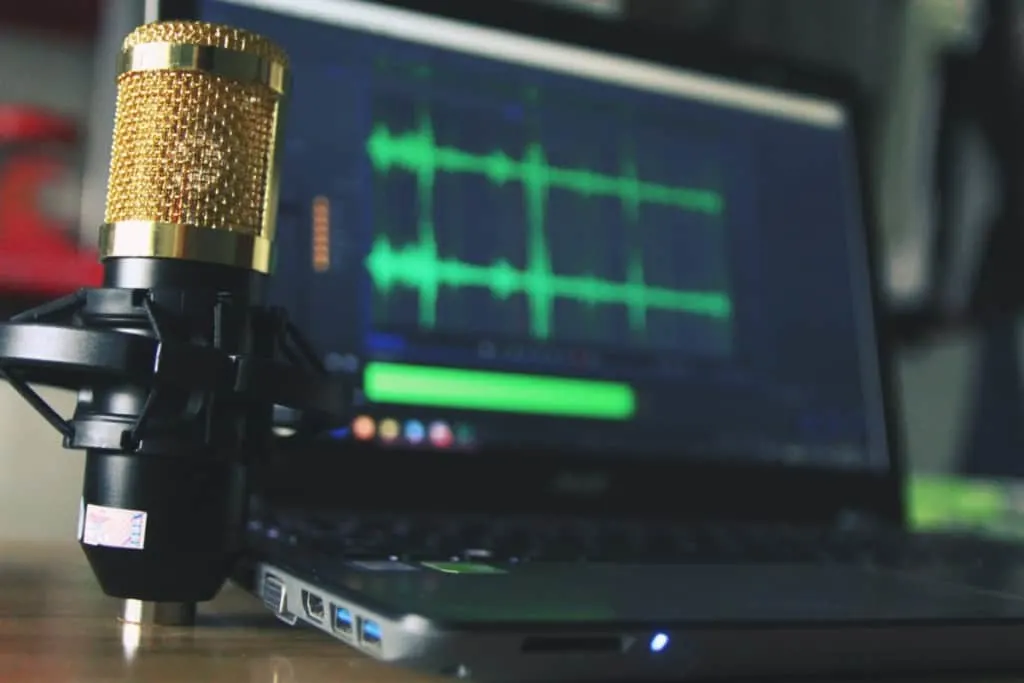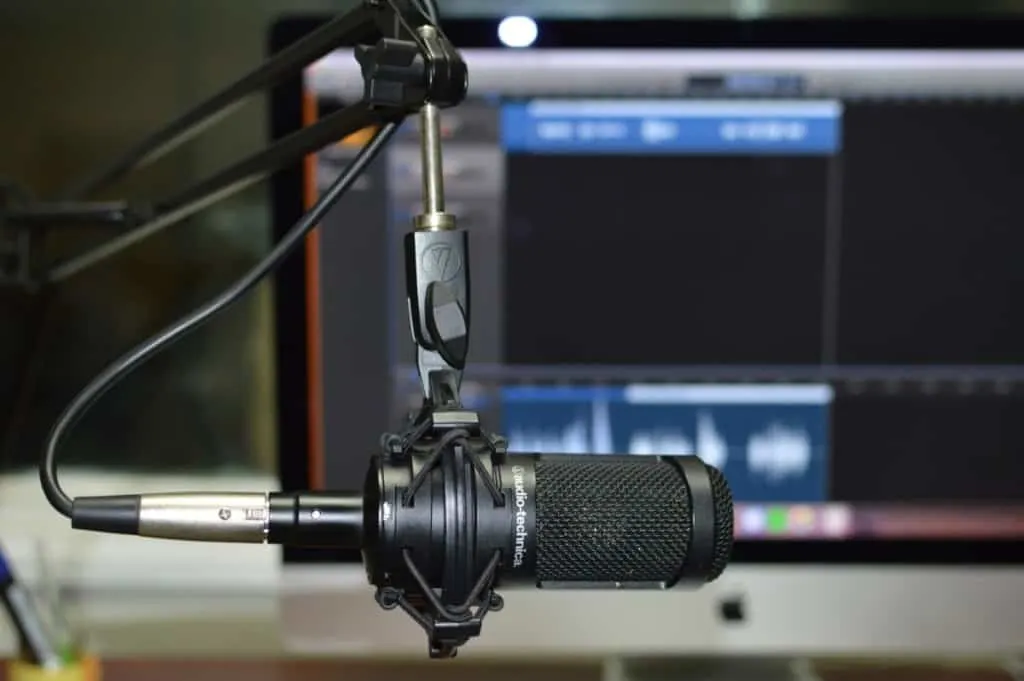Graphics cards are highly important devices that output images from a computer to a display. They are used for all processes on a computer that generate images, including music production.
Do you need a graphics card for music production?
A graphics card is required to link your computer to a display screen and produce any images. Without one, it would be impossible to see the visual display of your music production software, plugins, VST instruments, and digital audio workspace.
Advanced graphics cards, however, aren’t essential for music production.
Although you do certainly need one, the inbuilt graphics card in your computer or laptop should allow you to produce music with no issues.
High-end graphics cards are sometimes able to improve the processing power of your computer, though. In this article, I will go into the details of using graphics cards for music production.

Music Production & Graphics Cards
A graphics card is required for any visual images to be sent from your computer to a display screen. Music software includes as much visual content as it does audio, and therefore you do need a graphics card for production.
With that being said, it’s not necessary to purchase a dedicated graphics card for this purpose.
The card that comes with your laptop or computer will be powerful enough to cater to music production because it doesn’t involve particularly intensive graphics.
Video games, for example, do often require advanced graphics cards because the visual content requires a lot of power in this area.
In years gone by, it was more common for a dedicated graphics card to be required for music production, simply because computer processors lacked the power that they have nowadays. Modern computers boast exceptional processing power, and therefore they don’t rely as much on the graphics card to run efficiently.
There is one scenario when you may potentially require a dedicated graphics card for music production – when you are using multiple monitors.
Some onboard graphics cards only support a single monitor, and it’s common for music producers to use multiple screens so that they can split their mixing page with their arrangement page.
You might find that your computer’s onboard graphics card cope perfectly fine with multiple-monitor setups. If this is the case, then great! You can start producing with two screens without worrying about the display being interrupted or the CPU being overloaded.
Why You Need A Graphics Card For Music Production
Indeed, the main purpose of music production software is to record, mix, and master sounds. But the visual aspect is arguably just as important.
The majority of music production takes place within a DAW (digital audio workstation). Some of the most popular DAWs include Ableton, Logic, and Pro Tools.
DAWs have many different visual aspects that require a graphics card to run properly. In the following paragraphs, we’ll discuss all of these aspects in detail. Let’s start with the effects used for music production within a DAW, such as:
- EQ
- Compression
- Reverb
- Delay
- Limiter
- Auto-Filter
Each of these onboard effects relies strongly on the visual display, in addition to the sonic adjustments they cause. Without a graphics card, it would be impossible to access the boundless processing options that these effects provide.
Graphic EQ, short for equalization, is a prime example of why you need a graphics card for music production.
This processing tool is used to adjust the frequency range of a sound, such as a vocal take, bassline, or snare drum. It is usually presented as a graph that has a decibel meter on one side, and frequencies ranging between 0Hz-20Hz along the bottom.
As the sound is played, you can see a graphic representation of the frequencies that make up the sound, and the volume level of each frequency in decibels. The images that accompany the sound allow you to gain an understanding of which frequencies are predominant and which are perhaps weaker.
You can then use the visual graph to identify any problematic frequencies, in real-time. The display moves fluidly, engaging your graphics card in the process. Although this example requires less GPU than gaming, it is still essential nonetheless.
Another example of a popular music production process that requires a decent graphics card is compression. Compressors are used to control the dynamic range of a sound. Let’s use a snare drum as an example.
When the snare drum is subjected to a compressor, the effect immediately reads the dynamic range of the sound. It monitors the attack, release, and decibels that the sound reaches.
This is provided graphically by numerous level meters so that you can see the dynamic response of the snare drum, and adjust the threshold, ratio, and other parameters accordingly.
Compressors also include a graph, which is similar in appearance to an EQ.
This graph can be adjusted to ramp up the compression or allow the snare drum to have more freedom in terms of dynamics. Again, without a graphics card, this simply wouldn’t be possible unless you were to use analog effects units and a vintage-style reel-to-reel tape recorder with a mixing desk.
Choosing Gear Can Be Really Hard!
Home recording requires a whole series of equipment, and it can be difficult to do the research to figure out exactly what to buy depending upon your budget.
I have written a complete guide to exactly which equipment you should get depending on your budget.
Check out this video that discusses the computer requirements for music production.
GPU & CPU
We’ve established that it is necessary to have a graphics card for music production, but what about the particular type of graphics card we use?
Although the majority of music production software will run just fine using the standard graphics card that came with your computer, there are some cases where purchasing a more capable one may be beneficial.
Two terms that often confuse music producers are CPU and GPU. These are both essential elements of music production, and without the necessary amount of either, it would be impossible to even load up your preferred DAW, let alone use it to make music.
A GPU (graphics processing unit) is often used for parallel processing. They were designed to increase the rendering speeds of 3D graphics. Now, GPU is used for many applications, including music production.
The CPU (central processing unit) is essentially responsible for your computer’s ability to process information.
You might have noticed that when you’re making music in your production software, there is a CPU usage indicator. This is usually presented as a percentage, indicating how much of the total CPU is being taken up by music production.
Although CPU is arguably more important to music production, GPU also plays its part.
VST plugins and instruments that are externally sourced and integrated into your DAW are often taxing on the overall CPU. This can cause the software to malfunction, resulting in glitches, ruined recording, slow loading, and sometimes the dreaded crashing that potentially loses all of your hard work.
Some VST instruments rely heavily on visual elements to work effectively.
For example, pitch-correction software is displayed similarly to a keyboard. As you record audio into it, the software scans the waveform and determines the pitch of each note in real-time.
You then go through all of the notes individually and adjust the pitch if necessary. Without the visual representation of the notes, the transients, and the formants, it would be impossible to use this plugin. But because it features fairly complex graphics, it uses both GPU and CPU to function properly.
Another example of this would be a VST instrument plugin.
This type of software presents you with multiple pre-made sounds that are often recorded on a real instrument and edited so that you can use them in your music production.
A piano VST, for example, will often have a visual display of the instrument. As the MIDI information enters the plugin, it may be reflected by the various notes and controls being automatically used on the screen.
Although this doesn’t require huge amounts of GPU, it illustrates once again the importance of a graphics card when producing music.
- Having a good graphics card will ease the load on your CPU, which is the main determining factor when it comes to how quickly and efficiently your production software can run.
The type of graphics card you need depends on your intentions and other variables like what software you use to produce music. In the table below, you can see the processing requirements of the most popular music production software.
| Software | Mac | Windows |
| Ableton Live 10 | 4GB RAM | 4GB RAM |
| Pro Tools | 16GB RAM | 16GB RAM |
| Logic Pro | 4GB RAM | N/A |
| Reason 11 | 8GB RAM | 8GB RAM |
Related Questions
Is Windows or Mac better for music production?
Both Windows and Mac are well suited to music production, however, there are some DAWs and software which are exclusive to Mac. Logic Pro, for example, isn’t available on Windows.
Do you need an audio interface for music production?
It is possible to produce music without an audio interface, but you would need to use headphones or speakers that don’t require balanced cables. For recording and monitoring, an interface is required.
How do you use two screens for music production?
Using dual-monitors is a great way to streamline the music production process. To do this, you simply need to connect a second monitor to your computer via HDMI or another connector. Then in the settings of your computer, you can select dual-monitoring.

